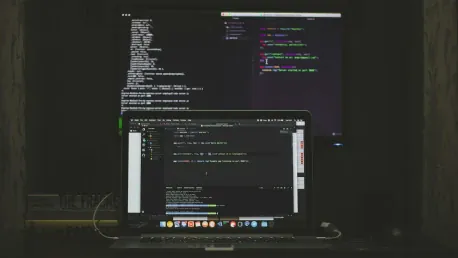Kubernetes has revolutionized the orchestration of containerized applications, offering unmatched agility, scalability, and speed in software delivery. As organizations rapidly adopt Kubernetes to innovate quickly and meet market demands, they face new and complex security challenges. This article explores how integrating DevSecOps practices can address these challenges effectively.
Understanding Kubernetes’ Security Landscape
The Rise of Kubernetes
Kubernetes has become the backbone of modern software development, enabling seamless orchestration of containerized applications. The platform’s agility, scalability, and speed significantly enhance the software delivery process. With Kubernetes, developers can manage large-scale, distributed systems more efficiently, making it an essential tool for businesses looking to scale quickly and deliver applications at high velocity. Since its introduction, Kubernetes has become the de facto standard for container orchestration, adopted by organizations of all sizes and industries to streamline their deployment processes.
However, the rise of Kubernetes has not been without its challenges. As its usage grows, so do the complexities surrounding its management and security. Containers and microservices add layers of complexity, necessitating robust security measures to protect the ecosystem from threats. The shift from traditional monolithic architectures to microservices architecture has profoundly impacted how applications are developed, deployed, and secured.
Security Challenges with Kubernetes
Traditional perimeter-focused security models fall short in addressing the dynamic, ephemeral environment of Kubernetes. Unlike static infrastructures, Kubernetes regularly creates and destroys containers, dynamically shifting network boundaries with each deployment. This shift requires a rethinking of security strategies. Traditional security measures, which focus on securing fixed perimeters, cannot keep pace with the rapid changes and transient nature of containers. The inherent dynamism in Kubernetes environments increases the risk of vulnerabilities going unnoticed and unaddressed, potentially leading to severe security breaches.
The rapid deployment and transient nature of containers create security gaps that traditional models struggle to fill. Misconfigurations and insecure settings are common in such environments, often due to the increased complexity and the sheer number of moving parts. These vulnerabilities can lead to unauthorized access, data breaches, and other malicious activities that jeopardize the entire system. Therefore, organizations must embrace a more dynamic, integrated approach to secure their Kubernetes deployments, ensuring that security is woven into the fabric of their infrastructure from the ground up.
The Role of DevSecOps in Kubernetes Security
What is DevSecOps?
DevSecOps is the practice of integrating security continuously throughout the software lifecycle. It represents a shift from static security checks to continuous, integrated security practices that align with the speed of DevOps. DevSecOps breaks down the silos between development, security, and operations teams, fostering a culture where security is a shared responsibility from the outset. This approach ensures that security considerations are integrated into every phase of the development process, from initial design to deployment and beyond. It leverages automated tools and processes to identify and mitigate risks early and often in the development cycle, reducing the time and cost associated with addressing security issues post-deployment.
This proactive security stance is critical in the fast-paced world of Kubernetes, where rapid deployments can easily outpace traditional security measures. By integrating security practices into the DevOps workflow, DevSecOps helps organizations maintain a high level of security without slowing down their delivery pipelines. It also promotes a culture of continuous improvement, where teams are always learning and adapting to new threats and challenges.
Benefits of DevSecOps
DevSecOps bridges the gap between development speed and security posture, ensuring security is not an afterthought. With DevSecOps, security becomes an integral part of the development process, not a separate, final step. This integration leads to more secure applications, as potential vulnerabilities are identified and addressed early in the development cycle. It fosters a culture where security responsibilities are shared across development, security, and operations teams. This collaboration is crucial for creating a unified security posture that covers all aspects of the application lifecycle.
By embedding security into the DevOps pipeline, teams can automate security checks and integrate security best practices into their workflows. This automation helps to reduce human error, increase efficiency, and ensure consistent application of security measures across the board. Additionally, continuous monitoring and feedback loops enable teams to rapidly respond to new threats, maintaining robust security in dynamic Kubernetes environments.
Common Pitfalls and Strategies for Kubernetes Security
Identifying Common Pitfalls
Misconfigurations, such as incorrect role-based access controls (RBAC) and overly permissive network policies, are frequent issues in Kubernetes deployments. These misconfigurations can inadvertently expose sensitive data or give unauthorized users access to critical resources. For instance, overly broad RBAC settings may allow users to perform administrative functions they do not need, increasing the risk of accidental or malicious changes. Insecure default settings and the use of unverified third-party container images introduce significant vulnerabilities. Third-party images often come with unnecessary or outdated components that can be exploited if not properly vetted.
Kubernetes environments also face runtime security challenges. Without proper runtime monitoring, it is difficult to detect and respond to threats in real-time. The complexity of Kubernetes can make it difficult to maintain visibility into all operations, leading to blind spots where malicious activities can go unnoticed. Consequently, organizations must adopt a comprehensive, layered security approach that addresses these common pitfalls while ensuring continuous protection.
Automation and Static Analysis
Automating security processes can address many common pitfalls. Static analysis tools and container image scanners help identify vulnerabilities early in the development cycle. Tools such as Trivy and Grype can scan container images for known vulnerabilities, ensuring that only secure images are deployed to production. Automation tools can enforce security policies consistently, reducing the risk of human error and ensuring that security measures are applied uniformly across all deployments.
By incorporating automated security checks into the CI/CD pipeline, organizations can catch and fix security issues before they reach production. This proactive approach not only enhances security but also reduces the time and cost associated with addressing vulnerabilities post-deployment. Automation also enables continuous monitoring and alerting, providing real-time insights into the security posture of the Kubernetes environment. This continuous feedback loop is essential for maintaining robust security in dynamic, fast-changing environments.
Policy as Code
Automating governance through Policy as Code using tools like OPA Gatekeeper and Kyverno ensures consistent security enforcement. These tools help prevent deployments that violate security best practices, enhancing overall security compliance. By defining security policies as code, organizations can automate the enforcement of these policies across all environments. This approach ensures that security measures are consistently applied, regardless of the deployment context. It also provides a clear, auditable record of security policies and their application.
Policy as Code simplifies the management of security policies by integrating them directly into the development and deployment workflows. This integration promotes transparency and accountability, making it easier to track compliance and identify areas for improvement. Additionally, it enables organizations to adapt quickly to evolving security threats by updating policies and automating their enforcement across the entire Kubernetes ecosystem.
Network and Runtime Security
Granular Network Security
Implementing network policies in Kubernetes can enforce micro-segmentation, reducing attack surfaces. Granular network security restricts traffic based on defined policies, mitigating potential vulnerabilities. Network policies allow administrators to define rules that control the flow of traffic between pods and services, effectively creating micro-perimeters within the Kubernetes environment. This granular control helps to limit the impact of any security breaches, preventing unauthorized lateral movement within the cluster.
Micro-segmentation is essential for securing Kubernetes environments, as it reduces the risk of an attacker moving freely within the network once they have gained access. By enforcing strict network policies, organizations can ensure that only legitimate traffic is allowed to flow between components, significantly enhancing overall security. Moreover, network policies can be managed and enforced at scale using automation tools, ensuring consistent application of security measures across large, distributed environments.
Enhancing Runtime Security
Tools like Falco and Sysdig monitor container activities and system calls, providing real-time threat detection. Enhancing visibility into runtime environments is crucial for proactive threat detection and response. Runtime security tools offer deep insights into container behavior, allowing administrators to detect anomalies and potential security breaches in real-time. These tools can identify suspicious activities, such as unauthorized access attempts, unusual network traffic patterns, or deviations from expected behavior.
By continuously monitoring container activities and system calls, organizations can quickly identify and respond to threats before they escalate. Advanced runtime security tools leverage machine learning algorithms to detect and respond to anomalies, enhancing the effectiveness and efficiency of security operations. These tools provide detailed visibility into the inner workings of Kubernetes environments, enabling administrators to maintain a strong security posture even in the face of evolving threats.
Measuring the Impact of DevSecOps
Key Metrics for DevSecOps
Relevant metrics such as Time to Remediate (TTR) and the number of resolved vulnerabilities help measure DevSecOps effectiveness. These metrics provide valuable insights into how quickly and efficiently the organization can identify, address, and resolve security issues. Shorter TTRs indicate a more responsive and effective security process, while a higher number of resolved vulnerabilities reflect a proactive stance toward addressing potential threats. Operational efficiency and risk-based indicators provide comprehensive insights into security performance. Metrics such as compliance scores, risk posture scores, and the number of active attack paths offer a holistic view of the organization’s security health.
By tracking these key metrics, organizations can gauge the success of their DevSecOps initiatives and identify areas for improvement. Continuous measurement and analysis of security metrics are essential for maintaining a robust security posture. They provide valuable feedback that can be used to refine security processes, enhance training programs, and allocate resources more effectively. Ultimately, these metrics help to ensure that DevSecOps practices are delivering the desired outcomes in terms of security, efficiency, and risk management.
Continuous Improvement and Learning
Blameless postmortems convert security incidents into learning opportunities, fostering continuous improvement. Conducting postmortems after security incidents enables organizations to identify root causes, understand what went wrong, and implement measures to prevent similar issues in the future. This approach encourages a culture of transparency and learning, where mistakes are seen as opportunities for growth and improvement. Leadership commitment and a culture of collaboration are essential for sustaining DevSecOps practices. Securing buy-in from top leadership ensures that security remains a priority across the organization.
Collaborative, cross-functional teams with shared responsibility for security foster a united approach to threat detection and mitigation. This collaborative culture is vital for the ongoing success of DevSecOps initiatives. By working together, development, security, and operations teams can share knowledge, leverage diverse expertise, and create a more resilient security posture. Continuous learning and improvement are at the heart of DevSecOps, driving innovation and adaptability in the face of an ever-evolving threat landscape.
Future Trends in Kubernetes Security
GitOps and Security Management
GitOps principles streamline the management of security policies, providing consistency and auditability. The integration of security management into version-controlled repositories enhances overall security governance. GitOps treats everything as code, including security policies, making it easier to track changes, enforce compliance, and revert to known good states when necessary. By using Git repositories to manage and apply security policies, organizations gain a clear, auditable trail of changes, enhancing transparency and accountability.
The adoption of GitOps for security management ensures that policies are consistently applied across all environments. It simplifies the deployment and management of security measures, reducing the risk of misconfigurations and ensuring compliance with industry standards and best practices. As Kubernetes environments continue to evolve, GitOps provides a robust framework for managing security policies at scale, enabling organizations to maintain a strong security posture in dynamic, fast-changing environments.
Deep Observability with eBPF
eBPF technology allows for deep observability and control, offering granular inspection of system activities. It plays a critical role in enhancing intelligent runtime security across Kubernetes environments. eBPF (extended Berkeley Packet Filter) enables developers to run custom programs within the Linux kernel, providing powerful insights into system behavior. This deep observability allows for the detection of subtle anomalies and potential security threats that might otherwise go unnoticed.
By leveraging eBPF, organizations can monitor system calls, network traffic, and other low-level activities in real-time, gaining a comprehensive understanding of their Kubernetes environments. This granular visibility is crucial for identifying and mitigating security risks, ensuring that potential threats are detected and addressed promptly. Additionally, eBPF can be used to enforce security policies at the kernel level, providing an additional layer of protection against malicious activities.
AI/ML for Security Operations
Artificial intelligence and machine learning improve anomaly detection and automate threat responses. These technologies can significantly enhance the effectiveness and efficiency of security operations. AI and ML algorithms analyze vast amounts of data, identifying patterns and anomalies that may indicate security threats. By continuously learning from new data, these algorithms become more effective over time, improving their ability to detect and respond to emerging threats.
AI and ML can also automate routine security tasks, such as vulnerability scanning, threat hunting, and incident response, freeing up human resources for more complex and strategic activities. This automation enhances the efficiency of security operations, ensuring that potential threats are addressed quickly and effectively. As AI and ML technologies continue to advance, they will play an increasingly important role in securing Kubernetes environments, providing powerful tools for maintaining robust security in the face of evolving threats.
API Security in Kubernetes
Securing APIs within Kubernetes environments is crucial as they become more interconnected. Focused efforts on API security ensure robust protection against potential breaches and vulnerabilities. APIs are the lifeblood of modern applications, enabling communication and data exchange between different services. However, they also represent a significant attack surface, making them a prime target for cyberattacks. Ensuring robust API security is essential for protecting sensitive data and maintaining the integrity of Kubernetes environments.
Organizations must implement comprehensive API security measures, including authentication, authorization, encryption, and regular security testing. Tools like OPA and Kyverno can enforce security policies for APIs, ensuring that only authorized access is granted and that data is transmitted securely. By prioritizing API security, organizations can safeguard their Kubernetes environments against a wide range of potential threats, ensuring the secure and reliable operation of their applications.
Building a DevSecOps Culture
Leadership and Collaboration
Top leadership must prioritize security to embed it throughout the organization effectively. Strong leadership commitment to security is essential for fostering a culture where security is a shared responsibility. Leadership plays a crucial role in setting the tone for the organization’s security posture, providing the necessary resources, and driving initiatives aimed at integrating security into every aspect of the development process. By prioritizing security at a strategic level, leadership ensures that security is not an afterthought but an integral part of the organization’s operations.
Cross-functional collaboration ensures that security practices are integrated seamlessly into development and operations. Breaking down silos between teams fosters a culture of shared responsibility, where security considerations are woven into every phase of the software lifecycle. By working together, development, security, and operations teams can leverage their collective expertise to identify and address potential threats proactively. This collaborative approach is essential for maintaining a robust security posture and ensuring that security measures are consistently applied across all environments.
Emphasizing Simplicity
In its deliberate approach to addressing the complexities of cryptocurrencies, the SEC opted for another delay in its verdict on the spot Ethereum ETF. The extension grants the SEC an opportunity not only to conduct an in-depth examination of Ethereum’s suitability for ETF status but also to source public insight, which could heavily sway the conclusion. This speaks to the SEC’s attentiveness to the nuances of digital assets and their integration into regulatory frameworks, which it does not take lightly. The situation closely parallels the stalling faced by Grayscale, who is also waiting for the green light to transform its Ethereum Trust into a spot ETF, raising questions about the contrasting regulatory processes for Bitcoin and Ethereum.
Simplicity in security solutions avoids unnecessary complexity, maintaining both agility and security. Striving for straightforward security measures enhances the team’s ability to respond to threats quickly. Overly complex security measures can slow down development processes and introduce additional risks. By focusing on simple, effective security practices, organizations can maintain agility while ensuring robust protection against potential threats. Simple security solutions are easier to implement, manage, and adapt to evolving threats, providing a solid foundation for continuous improvement.
In addition to simplicity, clear communication and comprehensive documentation are essential for ensuring that security practices are understood and consistently applied across the organization. This clarity helps eliminate confusion, reduce errors, and ensure that all team members are on the same page regarding security expectations and procedures. Organizations can build a strong, proactive security culture that supports rapid innovation and robust protection against evolving threats.
Conclusion
Kubernetes has transformed the orchestration of containerized applications, bringing unparalleled agility, scalability, and speed to software delivery. As businesses increasingly embrace Kubernetes to drive rapid innovation and meet evolving market demands, they encounter a new set of intricate security issues. Addressing these concerns is crucial for ensuring the integrity, confidentiality, and availability of their applications and data.
This article delves into how the implementation of DevSecOps practices offers a robust solution to these security challenges. DevSecOps, which integrates security into the DevOps workflow, ensures that security is not an afterthought but a fundamental part of the software development lifecycle. By embedding security from the inception of development through to deployment, organizations can identify and mitigate vulnerabilities early, reducing the risk of security breaches and ensuring compliance with regulatory standards.
Through continuous monitoring, automated testing, and regular security assessments, DevSecOps helps maintain a secure environment in the fast-paced world of Kubernetes. Moreover, it fosters a culture of shared responsibility where developers, operations, and security teams work collaboratively to maintain robust security standards. As a result, businesses can achieve both agility and security, meeting market demands without compromising the safety of their applications.









